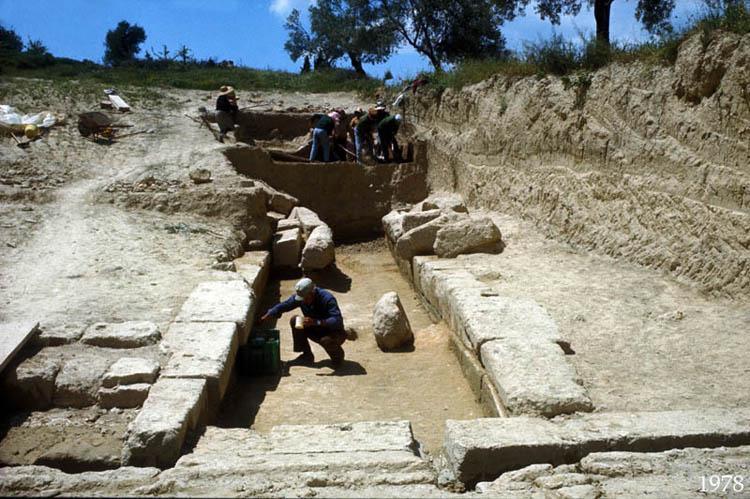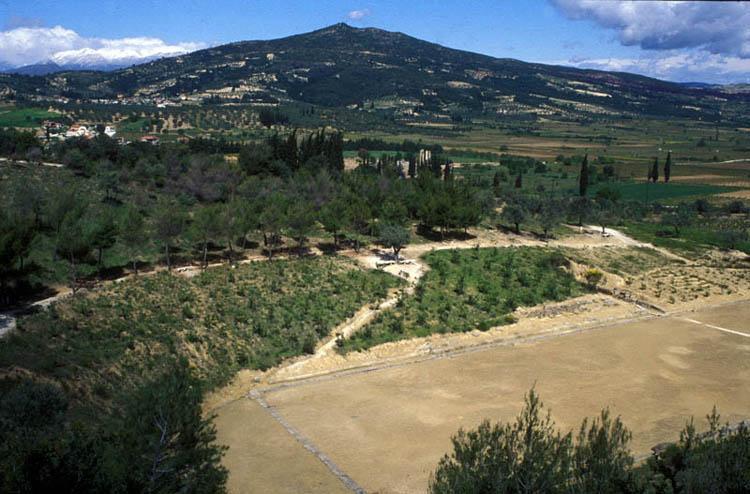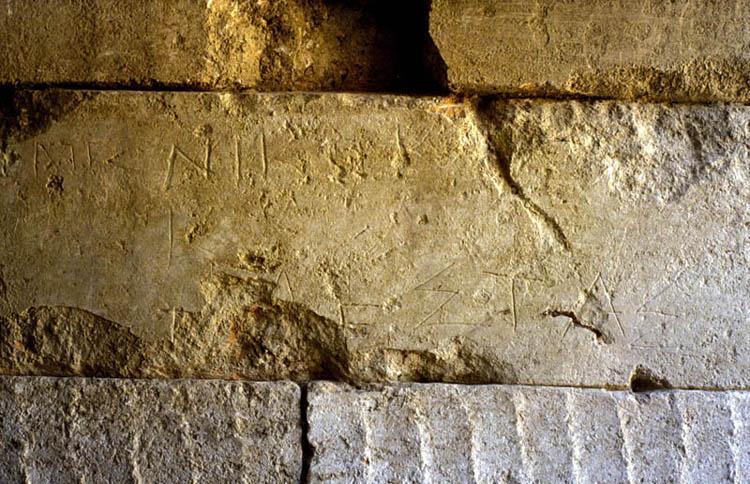
The passageway leading back into the hillside with three rows of seat blocks at left. The workmen are beginning a new trench that has just exposed the tunnel. May 4, 1978.
On the west side of the track, at a point just before (south of) the 200-foot marker, the stone seats are interrupted by two parallel walls that extend back (west) into the hillside. Capped with slabs that follow the hillslope up, this passageway ends at the vaulted tunnel that the athletes used as their entrance; this is the precise equivalent of the tunnel at Olympia which Pausanias (6.20.8) called the Hidden Entrance (krypte esodos). Unless one is directly opposite the entrance, it does seem to be hidden.
The tunnel is just over 36 m. in length and is for the most part in a very good condition, especially since the restoration work in 2011-2012. Dated securely to about 320 B.C. or earlier, the vault is one of the earliest attested from ancient Greece. Together with tombs in Macedonia, it shows that engineers from the time of Alexander the Great – before the advent of concrete – knew and used this architectural form.

The stadium from the southeast with the passageway of the Hidden Entrance (Krypte Esodos) at right and the temple of Nemean Zeus in the middle background, 2001.

View through the tunnel toward the track after restoration work, 2012 (cf. Press Release #11).

Several dozen ancient graffiti are preserved scratched into the surface of the tunnel walls. One, for example, records the name TELESTAS (perhaps the known Olympic victor) and in a different hand the verb NIKO. It seems that the ancient athlete, while waiting for the herald to announce his hame, was defacing public property

Drawing of an athlete (boxer) waiting on the track while the herald (keryx) announces the name of his opponent who runs out of the tunnel to the cheers of his fans, and the jeers of others.